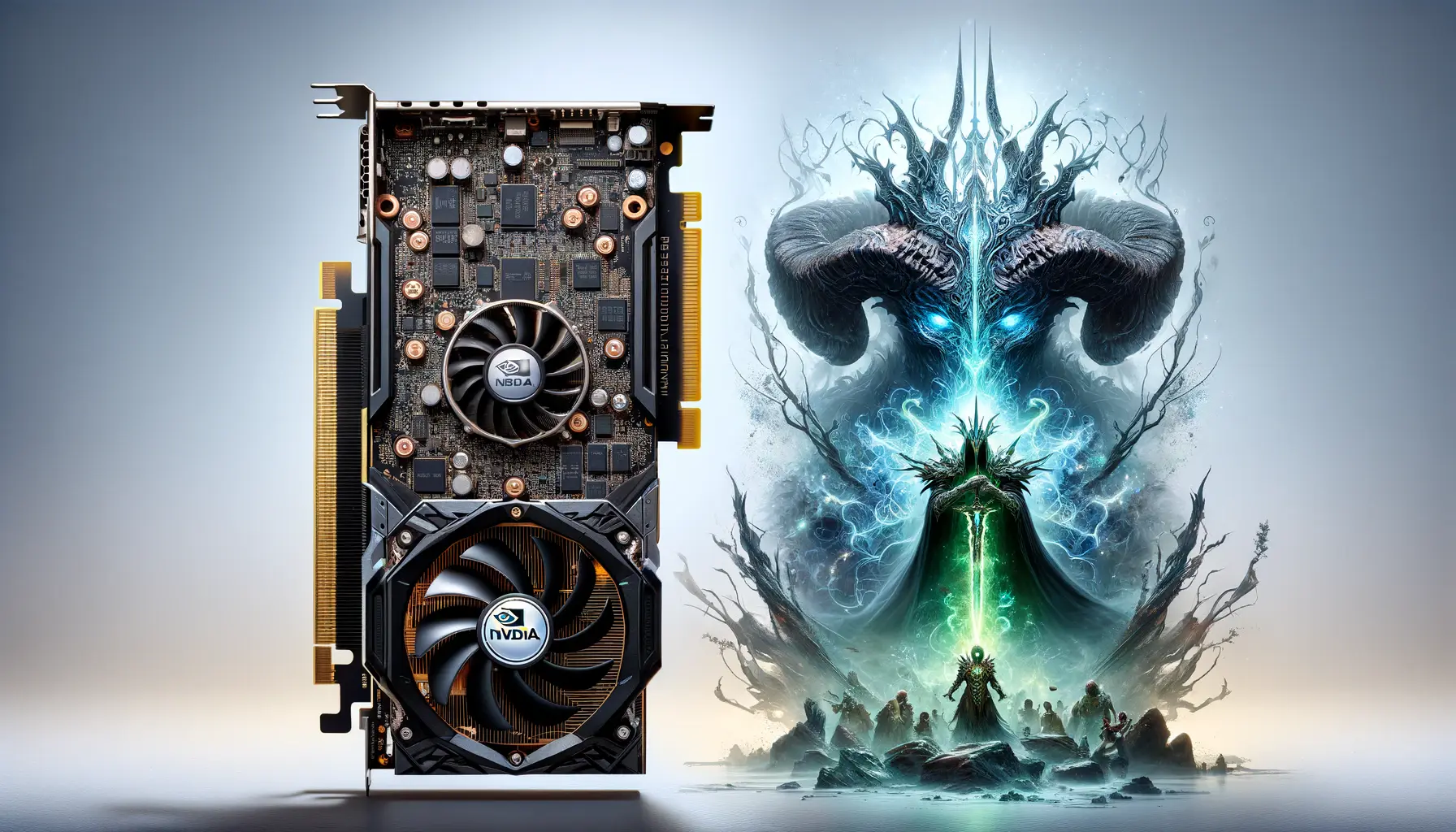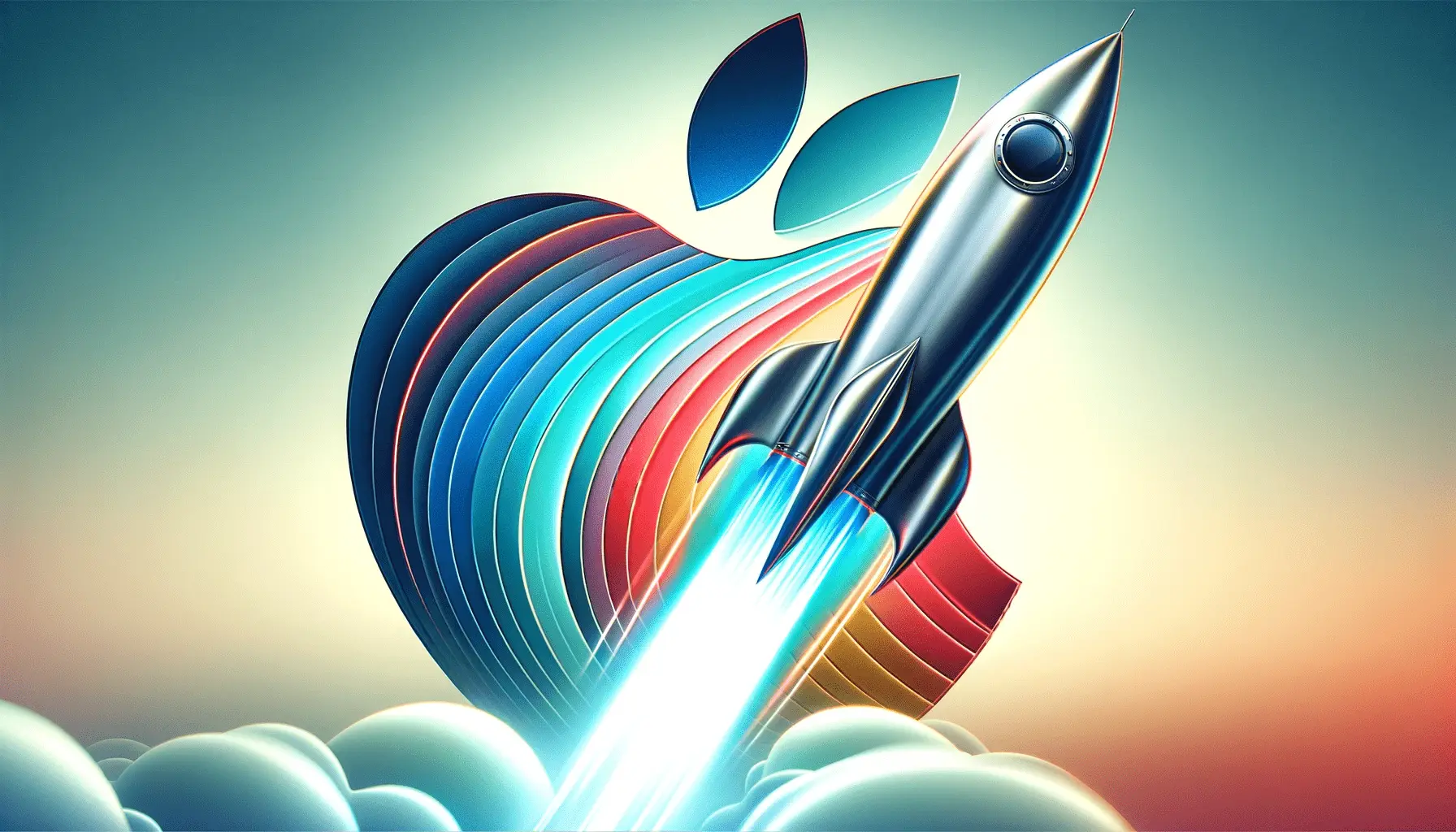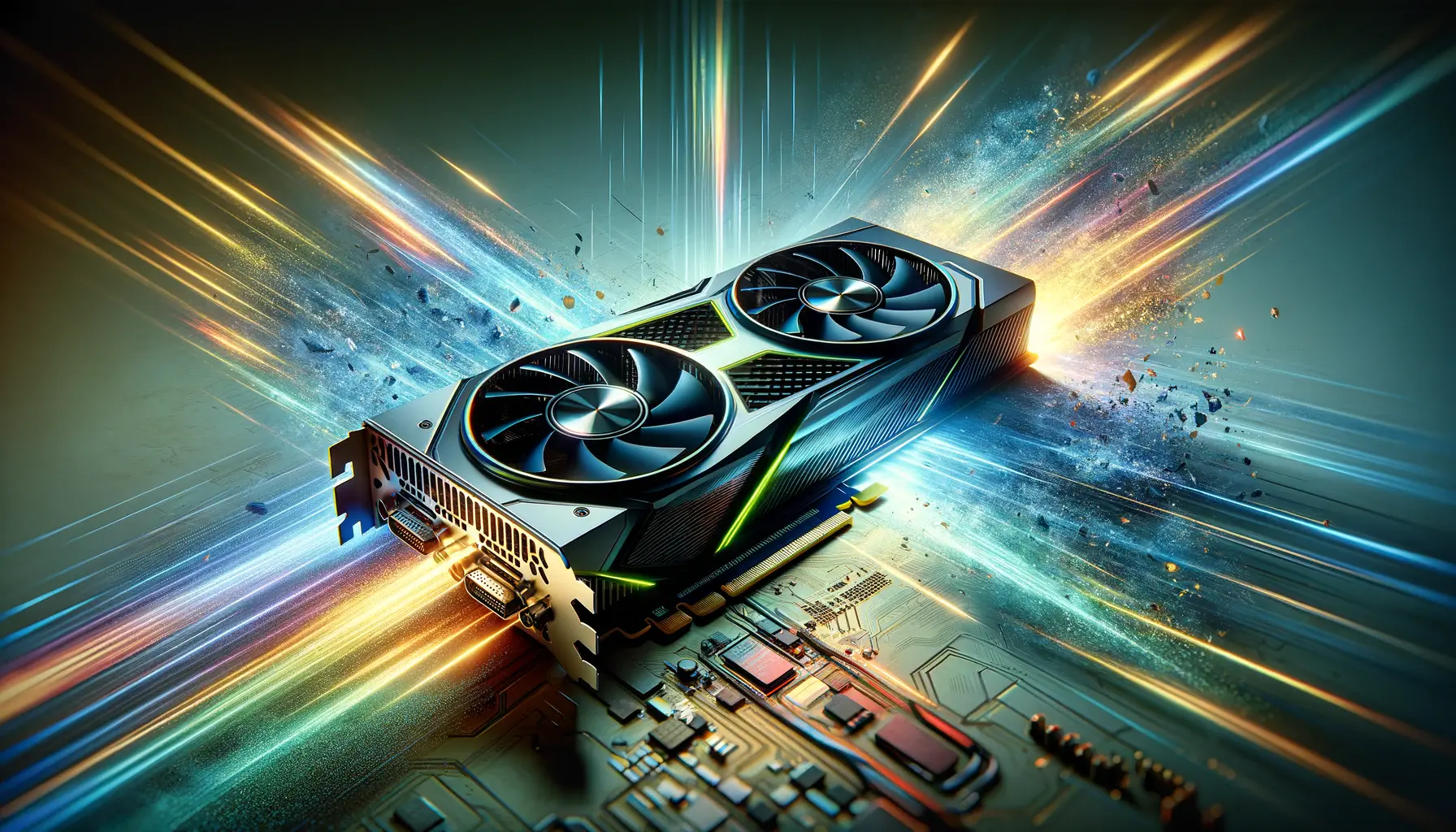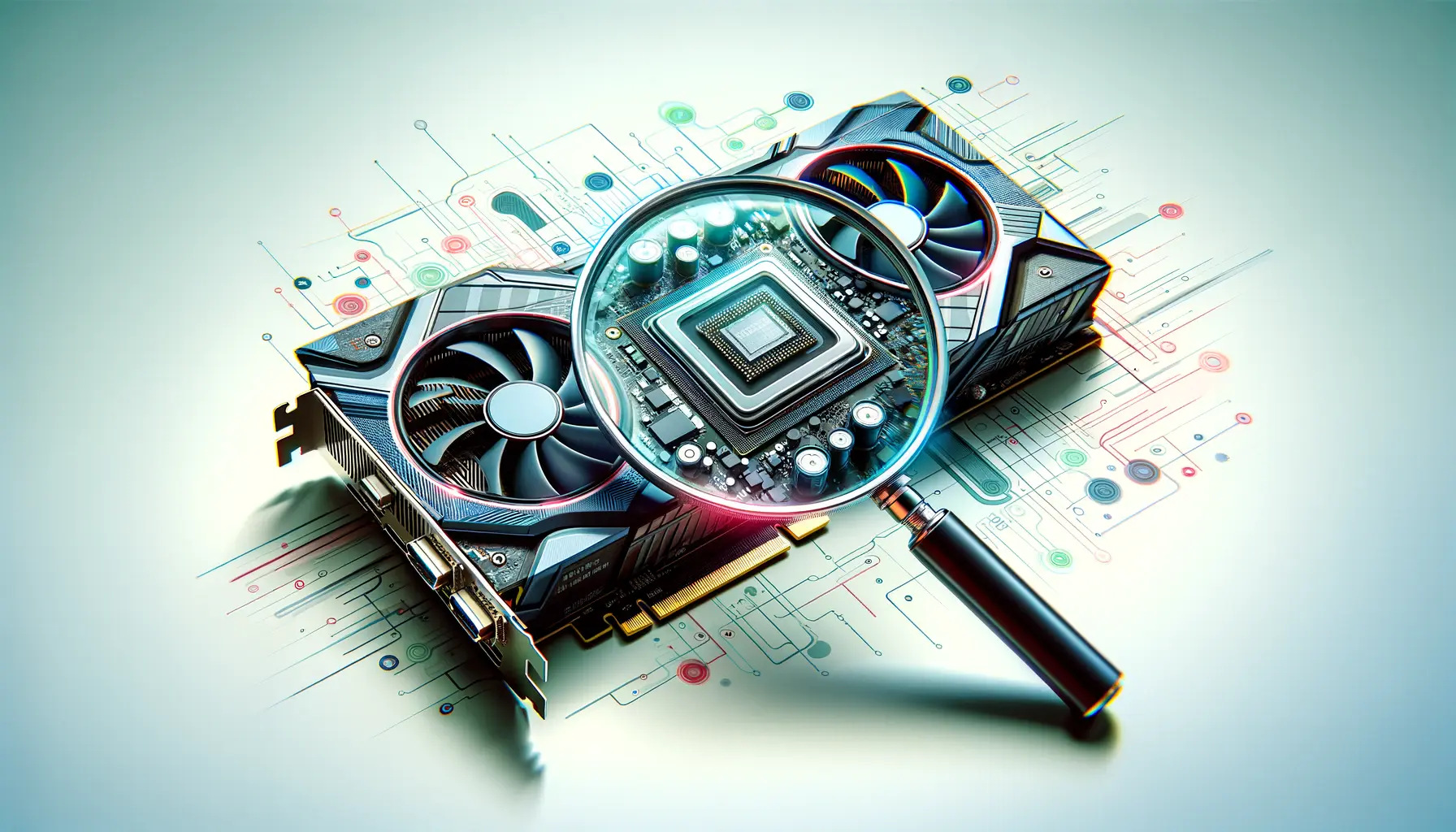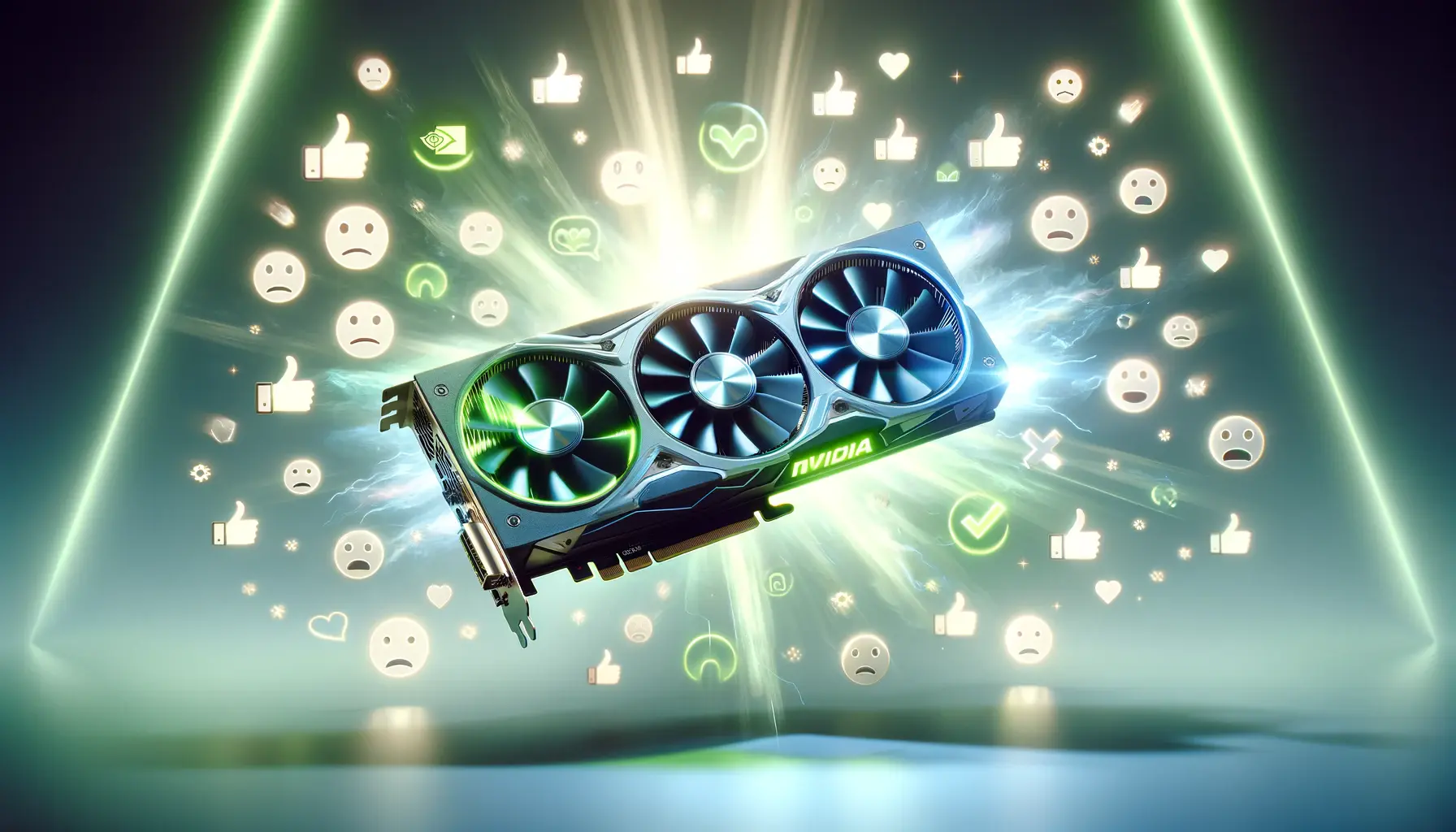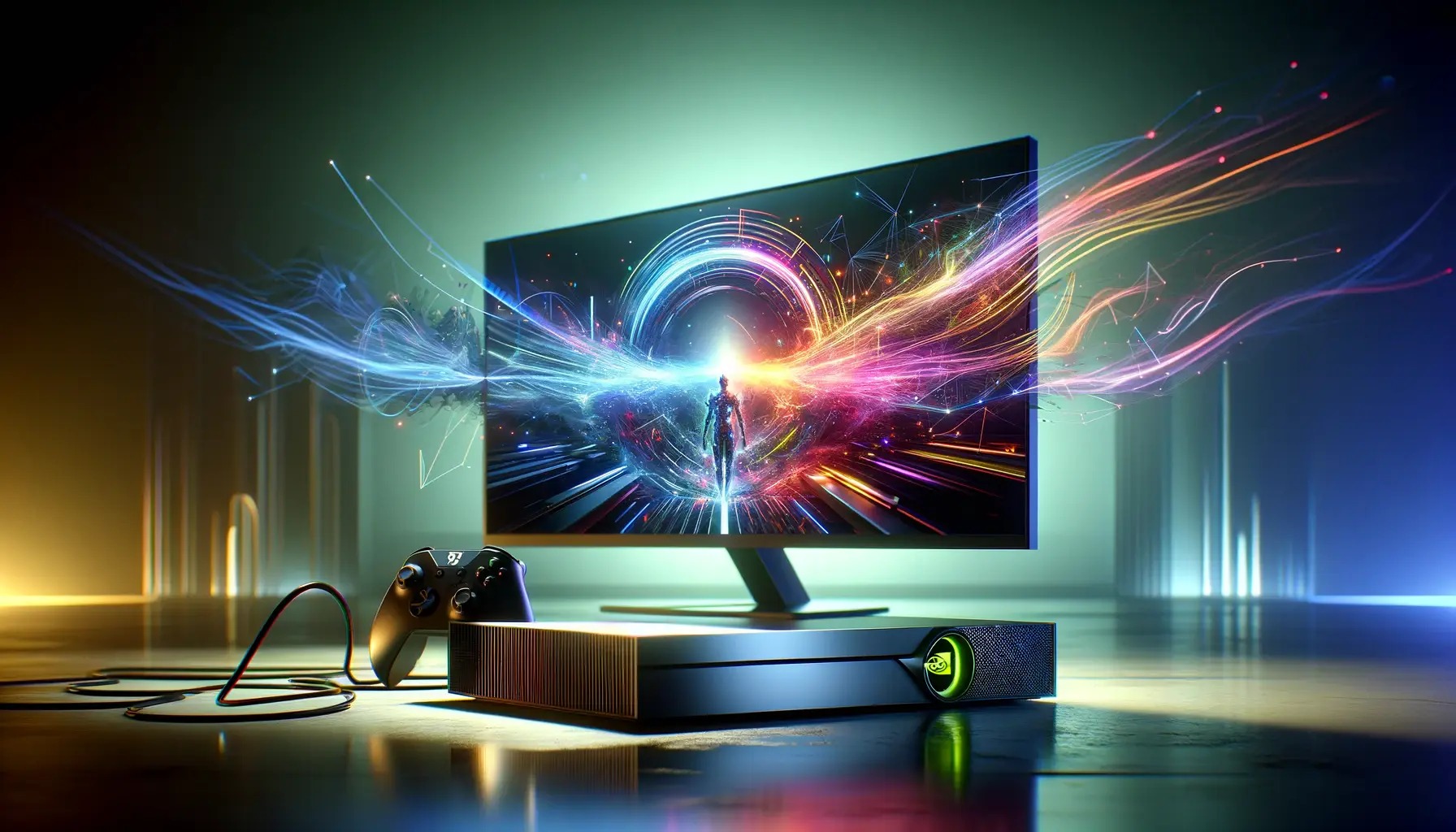The integration of NVIDIA’s Deep Learning Super Sampling (DLSS) technology into video games has marked a significant leap forward in rendering high-quality graphics without compromising performance.
Among the latest advancements, NVIDIA DLSS 3 stands out as a groundbreaking enhancement, particularly in its application within Diablo IV, a title that has captivated millions of gamers worldwide.
This case study delves into the intricacies of DLSS technology, focusing on its third iteration, and examines its impact on the gaming experience in Diablo IV, offering insights into the future of gaming visuals and performance optimization.
DLSS, at its core, utilizes artificial intelligence and machine learning to upscale lower-resolution images in real-time, achieving higher resolutions without the traditional computational cost.
NVIDIA DLSS 3, the latest version, introduces frame generation alongside super resolution, pushing the boundaries of what’s possible in game graphics and fluidity.
Diablo IV, with its rich, detailed world and dynamic lighting, provides the perfect canvas to explore the capabilities of DLSS 3.
This case study aims to shed light on how DLSS 3 enhances the visual fidelity and performance of Diablo IV, ensuring an immersive gaming experience for players.
- Understanding NVIDIA DLSS Technology
- DLSS 3’s Impact on Diablo IV
- DLSS 3 Configuration and Optimization in Diablo IV
- Comparative Analysis of DLSS 3 with Previous Versions
- DLSS 3’s Role in Future Gaming Technologies
- Challenges and Considerations for Implementing DLSS 3
- DLSS 3 in Competitive Gaming and Esports
- Embracing the Future with NVIDIA DLSS 3 in Diablo IV
- NVIDIA DLSS 3 in Diablo IV: Frequently Asked Questions
Understanding NVIDIA DLSS Technology
Evolution of DLSS
The journey of NVIDIA’s DLSS technology began with the goal of overcoming the limitations posed by traditional rendering techniques.
Early versions of DLSS sought to balance the trade-off between high-resolution graphics and playable frame rates.
By leveraging the power of deep learning, DLSS analyzes thousands of game frames and learns how to produce sharp images that mimic the detail of higher resolutions.
Over time, NVIDIA refined this technology, leading to the development of DLSS 2.0 and eventually DLSS 3, each iteration bringing significant improvements in image quality and performance efficiency.
DLSS 2.0 introduced a generalized AI model that could be applied across different games, eliminating the need for per-game training.
This version was a leap forward in terms of flexibility and ease of implementation for developers.
DLSS 3, however, takes a more ambitious step by incorporating AI-driven frame generation.
This means that DLSS 3 not only enhances existing frames but also creates new ones, effectively increasing the frame rate and making games feel smoother without additional hardware strain.
How DLSS Works
At its core, DLSS utilizes a neural network to upscale lower-resolution images in real-time.
This process begins with the game rendering a frame at a lower resolution, which reduces the computational load on the GPU.
The frame is then passed through the DLSS neural network, which has been trained on ultra-high-quality, 16K rendered images of numerous games.
The network uses this training to predict and construct high-resolution images that closely match what the frame would look like if rendered traditionally at higher resolutions.
The result is a game that runs at higher frame rates without sacrificing visual quality.
DLSS 3 introduces an additional layer to this process with frame generation.
By analyzing consecutive frames, the DLSS 3 AI can predict and generate intermediate frames, effectively doubling the perceived frame rate.
This innovation not only enhances visual smoothness but also significantly reduces input lag, providing a more responsive gaming experience.
This technology is particularly beneficial in fast-paced games where quick reactions are crucial, making it a game-changer for competitive gaming and immersive single-player experiences alike.
DLSS technology, especially in its third iteration, represents a significant advancement in the quest for the perfect balance between high-quality graphics and performance efficiency, setting a new standard for future game development.
DLSS 3’s Impact on Diablo IV
Enhanced Visual Fidelity
Diablo IV’s dark, gothic world is rich with intricate details, from the sprawling landscapes of Sanctuary to the minutiae of character armor.
DLSS 3 plays a pivotal role in bringing these visuals to life without compromising on performance.
By upscaling images from a lower resolution, DLSS 3 ensures that every frame is rendered with the utmost clarity and detail, making the game’s world more immersive and captivating for players.
The application of DLSS 3 in Diablo IV means that textures, shadows, and lighting effects are more refined, creating a more atmospheric and engaging gaming experience.
This is particularly noticeable in:
- Dark dungeons where light plays a crucial role in setting the mood
- Large open-world environments where distant objects retain their clarity
- Fast-paced combat scenarios where visual clarity can enhance gameplay
Improved Performance and Frame Rates
One of the most significant benefits of DLSS 3 in Diablo IV is the substantial improvement in frame rates.
This is crucial for maintaining smooth gameplay, especially in action-packed scenes common in the Diablo series.
DLSS 3 achieves this by:
- Generating additional frames to increase the perceived frame rate
- Reducing the workload on the GPU, allowing for higher settings or resolutions without a performance penalty
For players, this means that Diablo IV can run at higher resolutions, like 4K, while still maintaining fluid motion and responsiveness.
This is a game-changer for both casual and competitive players, ensuring that the visual experience is never compromised for the sake of performance.
DLSS 3’s frame generation technology not only enhances the visual experience by interpolating additional frames for smoother gameplay but also significantly reduces input lag, making every action feel more immediate and responsive.
Case Studies and Real-World Applications
Several case studies highlight the impact of DLSS 3 on Diablo IV’s performance and visuals.
Players with varying hardware setups have reported:
- Substantial increases in frame rates, with some systems seeing improvements of up to 2x when DLSS is enabled
- Enhanced visual details, particularly in environments and character models, making the game’s world more vibrant and lifelike
- A more fluid gaming experience, with reduced stuttering and lag during intensive gameplay scenarios
These real-world applications demonstrate DLSS 3’s ability to transform the gaming experience, making advanced visual fidelity accessible to a wider range of players without the need for high-end hardware.
DLSS 3 Configuration and Optimization in Diablo IV
For gamers looking to maximize their Diablo IV experience, understanding how to configure and optimize DLSS 3 settings is crucial.
This section provides a step-by-step guide to fine-tuning DLSS 3 for optimal performance and visual quality in Diablo IV.
Configuring DLSS 3 involves navigating through the game’s graphics settings menu.
Here, players can adjust DLSS settings to match their performance or quality preferences.
The process includes:
- Accessing the game’s settings menu and selecting the ‘Graphics’ tab.
- Locating the DLSS option and toggling it to ‘On’.
- Choosing between ‘Performance’, ‘Balanced’, ‘Quality’, or ‘Ultra Performance’ modes, each offering a different balance of image quality and frame rate.
Optimizing DLSS for Different Hardware
DLSS 3’s versatility allows it to cater to a wide range of hardware specifications.
Players can optimize DLSS settings based on their system’s capabilities:
- High-end systems can leverage ‘Quality’ or ‘Balanced’ modes to push for the highest visual fidelity while maintaining smooth frame rates.
- Mid-range setups benefit from ‘Performance’ mode, offering a good compromise between visual quality and performance.
- Lower-end hardware may opt for ‘Ultra Performance’ mode to maximize frame rates, crucial for a fluid gaming experience.
Advanced DLSS Features
DLSS 3 also introduces advanced features such as frame generation and reflex, which can further enhance gameplay:
- Frame Generation: By predicting and interpolating frames, this feature significantly increases the smoothness of motion, making fast-paced action more fluid.
- NVIDIA Reflex: This technology reduces input lag, ensuring that player actions are more responsive, a critical advantage in fast-paced gameplay.
Through careful configuration and understanding of DLSS 3’s features, players can significantly enhance their Diablo IV experience.
The key is to experiment with different settings to find the perfect balance that suits individual preferences and hardware capabilities.
Experimentation is key when configuring DLSS 3 settings in Diablo IV. Players should adjust settings based on their gameplay preferences and hardware capabilities to find the ideal balance between performance and visual quality.
Comparative Analysis of DLSS 3 with Previous Versions
Understanding the evolution of NVIDIA’s DLSS technology and its impact on gaming experiences is crucial for appreciating the advancements brought by DLSS 3.
This comparative analysis highlights the differences between DLSS 3 and its predecessors, focusing on their application in Diablo IV and the broader gaming landscape.
DLSS 1.0 marked NVIDIA’s initial foray into AI-driven image upscaling, offering improved performance but with mixed results in image quality.
DLSS 2.0 addressed many of these concerns, introducing a more versatile and efficient approach that significantly enhanced both performance and visual fidelity across a wider range of titles.
DLSS 3, however, represents a quantum leap forward, integrating frame generation technology to provide unprecedented improvements in smoothness and responsiveness.
Performance Enhancements
One of the most significant advancements of DLSS 3 over its predecessors is its impact on performance.
While DLSS 2.0 could effectively double frame rates in many games, DLSS 3 extends this capability by not only improving existing frames but also generating new ones, leading to a smoother gaming experience that feels more fluid and responsive.
- DLSS 2.0: Focuses on upscaling lower-resolution images using AI, significantly boosting performance while maintaining high image quality.
- DLSS 3: Adds AI-driven frame generation to the mix, effectively increasing the frame rate and reducing input lag, which is particularly beneficial in fast-paced games like Diablo IV.
Image Quality Improvements
Another area where DLSS 3 shines is in its ability to deliver superior image quality.
By leveraging advanced AI algorithms, DLSS 3 not only upscales images more effectively but also enhances the overall clarity and detail of the game’s visuals, making the world of Diablo IV more immersive and captivating.
- DLSS 2.0: Offers significant improvements in image quality over the original version, with fewer artifacts and more consistent visual fidelity.
- DLSS 3: Builds upon this foundation with even more refined image processing, resulting in sharper textures, better shadow details, and more realistic lighting effects.
The advancements in DLSS technology, culminating in DLSS 3, have set a new standard for what gamers can expect in terms of performance and visual quality.
Diablo IV serves as a prime example of how these technologies can be leveraged to create a more engaging and visually stunning gaming experience.
DLSS 3’s introduction of frame generation technology represents a significant advancement over previous versions, offering both improved performance and superior image quality, thereby enhancing the overall gaming experience in titles like Diablo IV.
DLSS 3’s Role in Future Gaming Technologies
The introduction of NVIDIA DLSS 3 in games like Diablo IV not only enhances current gaming experiences but also sets a precedent for the future of gaming technologies.
This section explores DLSS 3’s potential role in shaping next-generation gaming, highlighting its impact on game development, player experiences, and hardware innovation.
Game Development and Design
DLSS 3 offers game developers unprecedented flexibility in designing visually stunning and complex game worlds without being constrained by hardware limitations.
This technology enables:
- Higher detail and complexity in game environments and character models, pushing the boundaries of visual storytelling.
- More efficient use of resources, allowing developers to allocate more power to other aspects of game design, such as AI and physics simulations.
Enhancing Player Experiences
For players, DLSS 3 promises to revolutionize the way games are experienced.
Its impact extends beyond just visual enhancements to include:
- Significantly smoother gameplay and higher frame rates, even on mid-range hardware, making high-fidelity gaming more accessible to a wider audience.
- Reduced input lag and more responsive controls, crucial for competitive gaming and creating a more immersive gaming experience.
Hardware Innovation and Accessibility
DLSS 3 also plays a critical role in driving hardware innovation and accessibility.
It demonstrates that:
- Future hardware designs can focus on efficiency and AI capabilities, rather than just raw power.
- Players do not need to constantly upgrade to the latest hardware to enjoy the best gaming experiences, as DLSS 3 can breathe new life into older GPUs.
As gaming technology continues to evolve, DLSS 3 stands as a testament to NVIDIA’s commitment to innovation.
Its ability to deliver both performance and visual quality enhancements is likely to influence not only how games are developed and played but also how future gaming hardware is designed.
DLSS 3 is poised to play a pivotal role in the future of gaming, influencing game development, enhancing player experiences, and driving hardware innovation, thereby shaping the next generation of gaming technologies.
Challenges and Considerations for Implementing DLSS 3
While NVIDIA DLSS 3 offers significant advantages in terms of performance and visual quality, its implementation and widespread adoption come with certain challenges and considerations.
This part of the article delves into the potential hurdles and factors that developers and players need to keep in mind when embracing DLSS 3 technology.
Developer Adoption and Integration
For game developers, integrating DLSS 3 into their titles requires careful consideration of several factors:
- Technical complexity and resource allocation for integrating DLSS 3, which may require additional development time and expertise.
- Ensuring compatibility across a wide range of hardware, including older GPUs that may not fully support the latest features of DLSS 3.
Hardware Requirements and Accessibility
From a hardware perspective, DLSS 3’s benefits are most pronounced on newer NVIDIA GPUs, raising questions about accessibility for players with older or non-NVIDIA hardware:
- DLSS 3’s advanced features, such as frame generation, are optimized for the latest NVIDIA RTX series, potentially limiting its benefits for users with older graphics cards.
- The need for broader hardware support to ensure that a wider audience can enjoy the performance and visual quality improvements offered by DLSS 3.
Player Awareness and Education
Increasing player awareness and understanding of DLSS 3 and its benefits is crucial for its adoption:
- Educating players on how to configure DLSS 3 settings for optimal performance and visual quality based on their hardware and preferences.
- Addressing misconceptions about AI upscaling and frame generation technologies to ensure players are informed about the real-world benefits of DLSS 3.
Despite these challenges, the potential of DLSS 3 to transform gaming experiences is undeniable.
By addressing these considerations, developers and the gaming community can fully leverage the capabilities of DLSS 3, paving the way for its successful integration into future titles.
Misconceptions about DLSS 3, such as concerns over artificial image generation or the necessity of high-end hardware, can hinder its adoption. Clear communication and education are essential to overcome these challenges.
DLSS 3 in Competitive Gaming and Esports
The advent of NVIDIA DLSS 3 technology has not only transformed the visual fidelity and performance of single-player games like Diablo IV but also holds significant implications for competitive gaming and esports.
This section explores how DLSS 3 is set to influence the competitive gaming landscape, focusing on its impact on performance, fairness, and viewer experience.
Enhancing Player Performance
DLSS 3’s ability to deliver higher frame rates and reduce input lag is particularly beneficial in competitive gaming, where every millisecond counts.
Players can experience:
- Improved responsiveness and smoother gameplay, allowing for quicker reactions and more precise actions.
- Consistently high frame rates, ensuring that performance drops do not hinder competitive play.
Maintaining Fairness in Competition
While DLSS 3 offers performance advantages, it also raises questions about fairness in competitive settings.
Ensuring an even playing field involves:
- Standardizing the use of DLSS 3 across competitors to prevent any disparities in frame rates and responsiveness.
- Working with tournament organizers and game developers to establish guidelines for the acceptable use of DLSS and other performance-enhancing technologies.
Improving the Spectator Experience
DLSS 3 not only benefits players but also enhances the viewing experience for esports audiences.
Higher-quality visuals and smoother action contribute to:
- A more engaging and visually appealing broadcast, drawing in viewers and enhancing their enjoyment of the competition.
- Reduced motion blur and clearer visuals, making it easier for spectators to follow fast-paced action and understand gameplay dynamics.
The integration of DLSS 3 into competitive gaming and esports represents a significant step forward in the evolution of the industry.
By enhancing both player performance and the spectator experience, DLSS 3 technology is poised to play a pivotal role in the future of competitive gaming.
The adoption of DLSS 3 in competitive gaming and esports should be approached with careful consideration of its impact on fairness and the overall integrity of the competition, ensuring that technology enhances the sport without compromising its principles.
Embracing the Future with NVIDIA DLSS 3 in Diablo IV
The journey through the dark and immersive world of Diablo IV, enhanced by NVIDIA DLSS 3, represents a significant milestone in the evolution of gaming technology.
This case study has explored the multifaceted impact of DLSS 3, from elevating game aesthetics to reshaping player experiences and even influencing the competitive gaming arena.
As we stand on the brink of a new era in gaming, it’s clear that DLSS 3 is not just a feature but a transformative force, heralding a future where the boundaries of visual fidelity and performance are continually expanded.
The Vanguard of Visual Excellence
DLSS 3 has set a new benchmark for what gamers can expect in terms of visual quality and performance.
By intelligently balancing these two often conflicting priorities, NVIDIA has provided a solution that enhances the gaming experience without compromise.
The detailed landscapes and dynamic environments of Diablo IV, brought to life with unprecedented clarity and smoothness, serve as a testament to the power of DLSS 3 technology.
A Catalyst for Inclusive Gaming
Moreover, DLSS 3’s role in democratizing high-quality gaming experiences cannot be overstated.
By enabling older or mid-range hardware to deliver a gaming experience that rivals that of high-end setups, DLSS 3 ensures that more players can enjoy the latest games at their best.
This inclusivity is crucial for the growth of the gaming community, allowing it to thrive and expand beyond the limitations of hardware capabilities.
Challenges and Opportunities Ahead
Despite its many advantages, the adoption of DLSS 3 comes with its own set of challenges, from integration hurdles for developers to ensuring fairness in competitive play.
However, these challenges also present opportunities for innovation and collaboration within the gaming industry.
As developers, players, and esports organizers navigate these waters, the collective effort will likely lead to new standards and practices that further enhance the gaming experience for all.
Conclusion
In conclusion, NVIDIA DLSS 3’s integration into Diablo IV is more than just a technical achievement; it’s a glimpse into the future of gaming—a future where technology like DLSS 3 continues to break down barriers between imagination and reality.
As we look forward to what’s next, it’s clear that DLSS 3 will play a pivotal role in shaping that future, driving the industry towards new horizons of immersive and accessible gaming experiences.
NVIDIA DLSS 3 in Diablo IV: Frequently Asked Questions
Explore the most common inquiries about NVIDIA DLSS 3’s integration into Diablo IV, providing insights into how this technology enhances the gaming experience.
NVIDIA DLSS 3 is a groundbreaking AI rendering technology that boosts frame rates and generates beautiful, sharp images for your games.
DLSS 3 enhances Diablo IV by significantly increasing frame rates and improving visual quality without taxing the GPU.
DLSS 3 is optimized for NVIDIA RTX series GPUs, particularly the 40 Series, and may not be supported by older graphics cards.
No, players need to manually enable DLSS 3 in the game’s graphics settings under the Performance tab.
It depends on your hardware, but ‘Quality’ mode is a good start for balancing performance and visual fidelity.
Yes, DLSS 3 includes technologies like NVIDIA Reflex to reduce system latency and improve responsiveness.
Potentially, as DLSS 3 can provide smoother gameplay and lower latency, but settings can be standardized in competitive play.
